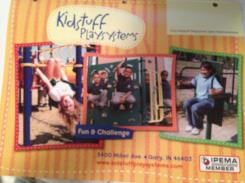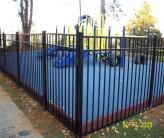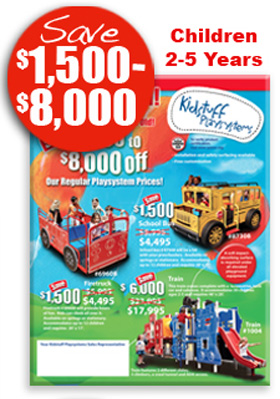
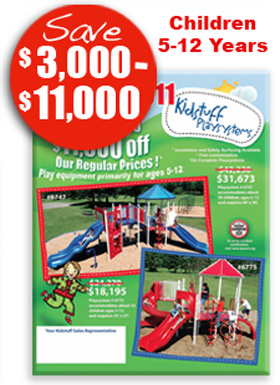

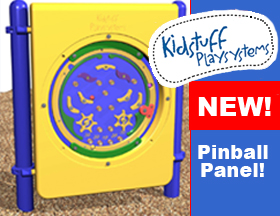
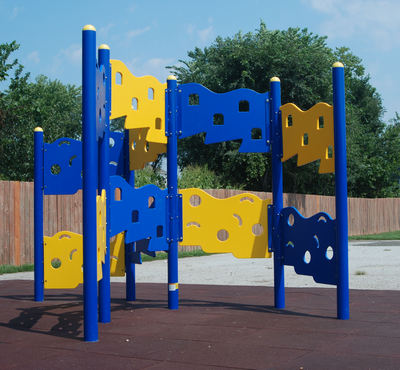

Commercial Playground Equipment
Sales & Installation
Schools - Parks & Recreation - Daycare
Churches - Military - Camps grounds
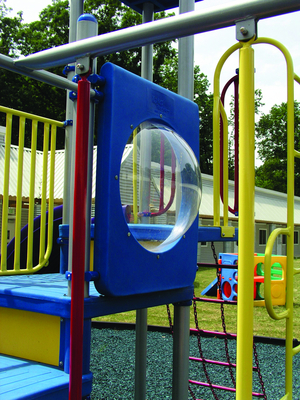
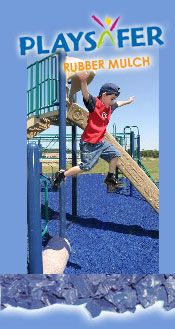
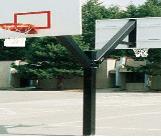
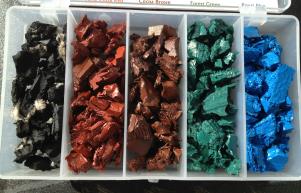
Kidstuff Play Systems is IPEMA-certified manufacturer of playground equipment with over 20 years of experience. Please see www.ipema.org for a list of our certified products. We have IPEMA-certified playground equipment for parks, schools, day care centers, churches, apartment complexes, Head Starts, homeowners associations, campgrounds, new developments, and resorts. We can also custom design commercial playground equipment to fit your needs.
NJPS Kidstuff Play Structures
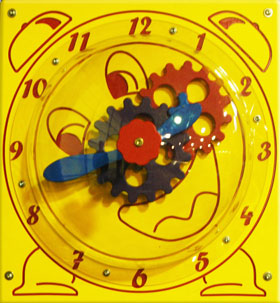
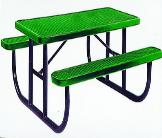
NJPS! Start To Completion
Commercial Playground Equipment
Click here for our Online Catalog
Custom Courts for all games
Custom Vinyl tile Court Stsyems. Design your court color and layout. Add any game to your court, 4 Square, Hopscotch, Tic Tick Toe, Vallyball, Basketballball, Tennis, Soccer, Hockey and more Click Here to design center
Beat Your Best Quote by 5%
What Time Is It? Clock Panel - In no time at all, the children playing on your playground will learn how to tell time with the new What time is it? Clock Panel by Kidstuff Playsystems.
What's New!
NJPS Kidstuff Play Structures, Inc.
95 Robbinsvile Rd
Robbinsville NJ 08391
Phone: 888-679-3751 Fax: 732-481-5252
NJPreferredservices@gmail.com
609-858-2283
History
Playgrounds originated in Germany. They were created as organized and instructional play areas for the use of teaching children the proper ways to play. Over time, organized playing areas have been adopted by other countries of the world and have become commonplace. The widespread adoption of playgrounds led to the Germanisation of some aspects of childhood development.
Recognizing the need for playgrounds, former President Theodore Roosevelt stated in 1907:
City streets are unsatisfactory playgrounds for children because of the danger, because most good games are against the law, because they are too hot in summer, and because in crowded sections of the city they are apt to be schools of crime. Neither do small back yards nor ornamental grass plots meet the needs of any but the very small children. Older children who would play vigorous games must have places especially set aside for them; and, since play is a fundamental need, playgrounds should be provided for every child as much as schools. This means that they must be distributed over the cities in such a way as to be within walking distance of every boy and girl, as most children can not afford to pay carfare.
Effects on child development
Professionals recognize that the social skills that children develop on the playground become lifelong skill sets that are carried forward into their adulthood. Independent research concludes that playgrounds are among the most important environments for children outside the home. Most forms of play are essential for healthy development, but free, spontaneous play—the kind that occurs on playgrounds—is the most beneficial type of play.
The relationship between playground activity and the promotion of children’s self-esteem.
There is a general consensus that physical activity reduces the risk of psychological problems in children and fosters their self-esteem.
Colorful sheltered playground at Fuji-Hakone-Izu National Park, Japan
This consensus is reflected in the Chief Medical Officer’s report (Department of Health, 2004), which stated that a review of available research suggests that the health benefits of physical activity in children are predominantly seen in the amelioration of risk factors for disease, avoidance of weight gain, achieving a peak bone mass and mental well-being.
Evidence suggests that children who participate in physical activity improve their self-esteem. Indeed, Ekeland, Heian and Hagan (2005) and Gruber (as cited in Biddle and Mutrie, 2001, p186) found that exercise programmes had a significant positive effect on children's self-esteem.
Moreover, commentators argue that the quality of a child’s exercise experience can affect their self-esteem. Ajzen TPB (1991) promotes the notion that children’s self-esteem is enhanced through the encouragement of physical mastery and self-development. It can be seen that playgrounds provide an ideal opportunity for children to master physical skills, such as learning to swing, balance and climb. Personal development may be gained through the enhancement of skills, such as playing, communicating and cooperating with other children and adults in the playground.
It can also be seen that public and private playgrounds act as a preventative health measure amongst young people because they promote physical activity at a stage in children’s lives when they are active and not yet at risk from opting out of physical activity. Children’s self-esteem may be enhanced through early positive exercise experiences that contain challenge, fun and excitement. Seesaw with a crowd of children playing Rope bridge for improving balance Children have devised many playground games and pastimes. But because playgrounds are usually subject to adult supervision and oversight, young children's street culture often struggles to fully thrive there. Research by Robin Moore (Childhood's Domain: Play and Place, 1986) has clearly shown that playgrounds need to be balanced with marginal areas that (to adults) appear to be derelict or wasteground but to children they are area's that they can claim for themselves, ideally a wooded area or field. A type of playground called a playscape can provide children with the necessary feeling of ownership that Moore describes above. Playscapes can also provide parents with the assurance of their child's safety and wellbeing, which may not be prevalent in an open field or wooded area.
Safety
Safety, in the context of playgrounds, is generally understood as the prevention of injuries. Risk aversion and fear of lawsuits on the part of the adults who design playgrounds prioritizes injury prevention above other factors, such as cost or developmental benefit to the users. It is important that children gradually develop the skill of risk assessment, and a completely safe environment does not allow that.
Sometimes the safety of playgrounds is disputed in school or among regulators. Over at least the last twenty years, the kinds of equipment to be found in playgrounds has changed, often towards safer equipment built with plastic. For example, an older jungle gym might be constructed entirely from steel bars, while newer ones tend to have a minimal steel framework while providing a web of nylon ropes for children to climb on. Playgrounds with equipment that children may fall off often use mulch on the ground to help cushion the impact.
Safety discussions do not normally include an evaluation of the unintended consequences of injury prevention, such as older children who do not exercise at the playground because the playground is too boring.
Regulation
In the United States, the Consumer Product Safety Commission and the American National Standards Institute have created a Standardized Document and Training System for certification of Playground Safety Inspectors. These regulations are nationwide and provide a basis for safe playground installation and maintenance practices. ASTM F1487-07 deals with specific requirements regarding issues such as play ground layout, use zones, and various test criteria for determining play ground safety. ASTM F2373 covers public use play equipment for children 6–24 months old. This information can be applied effectively only by a trained C.P.S.I. A National Listing of Trained Playground Safety Inspectors is available for many states. A Certified Playground Safety Inspector (CPSI) is a career that was developed by the National Playground Safety Institute (NPSI) and is recognized nationally by the National Recreation and Park Association or N.R.P.A. (Some information sources offer interactive examples of playground equipment that violates CPSC guidelines.)
In Australia, Standards Australia is responsible for the publication of the playground safety Standards AS/NS4422, AS/NZS4486.1 and AS4685 Parts 1 to 6. The University of Technology Sydney is responsible for the training and accreditation of playground inspectors. The Register of Playground Inspectors Australia lists all the individuals who have been certified to inspector playgrounds within Australia.
European Standards EN 1177 specifies the requirements for surfaces used in playgrounds. For each material type and height of equipment it specifies a minimum depth of material required. EN 1176 covers playground equipment standards.[9][10] In the UK, playground inspectors can sit the examinations of the Register of Play Inspectors International at the three required levels - routine, operational and annual. Annual inspectors are able to undertake the post-installation inspections recommended by EN 1176.
Prevention strategies
Because the majority of playground injuries are due to falls from equipment, injury prevention efforts are primarily directed at reducing the likelihood of a child falling and reducing the likelihood of a severe injury if the child does fall. This is done by:
•reducing the maximum fall height of equipment, primarily by reducing the overall height of anything a child might climb on or into;
•reducing the likelihood of falling from equipment, through using barriers, discouraging climbing, and making upper surfaces inconvenient or uncomfortable for climbing or sitting on; and
•installing a more flexible surface under and around play equipment, so that a child who falls is less likely to break a bone.
How effective these strategies are at preventing injuries is debated by experts, because when playgrounds are made from padded materials, children often take more risks.
Playground injury
A crowded playground in Turkey
Each year in the United States, emergency departments treat more than 200,000 children ages 14 and younger for playground-related injuries.[12][13] Approximately 156,040 (75.8 %) of the 1999 injuries occurred on equipment designed for public use; 46,930 (22.8 %) occurred on equipment designed for home use; and 2,880 (1.4 %) occurred on homemade playground equipment (primarily rope swings).
Percentage of injuries involving public equipment
• About 46% occurred in schools.
About 46% occurred in schools.
• About 31% occurred in public parks.
About 31% occurred in public parks.
• About 10% occurred in commercial childcare centers.
About 10% occurred in commercial childcare centers.
• About 3% occurred in home childcare.
About 3% occurred in home childcare.
• About 3% occurred in apartment complexes.
About 3% occurred in apartment complexes.
• About 2% occurred in fast food restaurants.
About 2% occurred in fast food restaurants.
• About 9% occurred in other locations.
About 9% occurred in other locations.
From January 1990 to August 2000, CPSC received reports of 147 deaths to children younger than 15 that involved playground equipment.
• 70% of those deaths occurred in home
70% of those deaths occurred in home
• 30% of those deaths occurred in public use
30% of those deaths occurred in public use
Girls were involved in a slightly higher percentage of injuries (55%) than were boys (45%).
Injuries to the head and face accounted for 49% of injuries to children 0-4, while injuries to the arm and hand accounted for 49% of injuries to children ages 5–14. Approximately 15% of the injuries were classified as severe, with 3% requiring hospitalization. The most prevalent diagnoses were fractures (39%), lacerations (22%), contusions/abrasions (20%), strains/sprains (11%).
For children ages 0–4, climbers (40%) had the highest incidence rates, followed by slides (33%). For children ages 5–14, climbing equipment (56%) had the highest incidence rates, followed by swings (24%). Most injuries on public playground equipment were associated with climbing equipment (53%), swings (19%), and slides (17%).
Falls to the surface was a contributing factor in 79% of all injuries. On home equipment, 81% were associated with falls.
In 1995, playground-related injuries among children ages 14 and younger cost an estimated $1.2 billion.
On public playgrounds, more injuries occur on climbers than on any other equipment.[On home playgrounds, swings are responsible for most injuries.
Playgrounds in low-income areas have more maintenance-related hazards than playgrounds in high-income areas. For example, playgrounds in low-income areas had significantly more trash, rusty play equipment, and damaged fall surfaces
Unintended consequences
As a result of what some experts say is overprotectiveness driven by a fear of lawsuits, playgrounds have been designed to be, or at least to appear, excessively safe.This overprotectiveness may protect the playground owner from lawsuits, but it appears to result in a decreased sense of achievement and increased fears in children.
The equipment limitations result in the children receiving less value from the play time.The enclosed, padded, constrained, low structures prevent the child from taking risks and developing a sense of mastery over his or her environment. Successfully taking a risk is empowering to children. For example, a child climbing to the top of a tall jungle gym
Home Products Planning Major Features GSA Information Request A Quote Safety Contact Us Infant Toddler
New Items Shade Structures Wood Play Systems Swing Sets Signs & Play Panels Healthrek Fitness System Climing Walls Slides
- Benches
- Shelters
- Recycled Playgrounds
- Picnic Tables
- Rubber Surfacing
- Playground Systems
- Infant Play Equipment
- Ages 2-5 Play Equipment
- Ages 5-12 Play Equipment
- Ages 2-12 Play Equipment
- Playground Equipment Sale
- Accessible Equipment
- Commercial Swing Sets
- Park Equipment
- Swing Seats
- Bleachers
- Park Amenities
- Shade Structures
- Playground Surfacing
- Independent Play
- Outdoor Playgrounds
- Playground Shade
- Playground Slides
- Spring Riders
- Climbing Walls
- Sports Equipment
- Fitness Equipment
- Climbers
- Commercial Play Equipment
- Church Playgrounds
- School Playgrounds
- Elementary Playgrounds
- Day Care Playgrounds
- Preschool Playgrounds
- City Playgrounds
- Park Playgrounds
Fencing
Basketball Systems
Installation Service Area's NJ, NY, PA, DE, MD, Other Area's Call
Union Beach, NJ Union City, NJ Union County, NJ Union Township, NJ Hunterdon County, NJ Union Township, NJ Union County, NJ Upper Deerfield, NJ
Upper Freehold, NJ Upper Pittsgrove, NJ Upper Saddle River, NJ Upper Township, NJ Ventnor City, NJ Vernon, NJ Verona, NJ Vineland, NJ Voorhees, NJ
Waldwick, NJ Wall Township, NJ Wallington, NJ Walpack, NJ Wanaque, NJ Wantage, NJ Warren, NJ West Long Branch, NJ West Milford, NJ West New York, NJ
River Vale, NJ Robbinsville, NJ Rochelle Park, NJ Rockaway, NJ Rockleigh, NJ Rocky Hill, NJ Roseland, NJ Roselle, NJ Roselle Park, NJ Roxbury, NJ
Rumson, NJ Runnemede, NJ Rutherford, NJ Saddle Brook, NJ Saddle River, NJ Salem City, NJ Salem County, NJ Sandyston, NJ Sayreville, NJ Scotch Plains, NJ
Sea Bright, NJ Sea Isle City, NJ Seaside Heights, NJ River Edge, NJ Riverdale, NJ Riverside, NJ Riverton, NJ Seaside Park, NJ Secaucus, NJ Sergeantsville, NJ
Shamong Township, NJ Shiloh Borough, NJ Ship Bottom Borough, NJ Shrewsbury Borough, NJ Somerdale Borough, NJ Somerset County, NJ Somers Point, NJ
Somerville, NJ South Amboy, NJ South Bound Brook, NJ South Brunswick, NJ South Hackensack Township, NJ South Harrison Township, NJ South Orange, NJ
South Plainfield, NJ South River Borough, NJ South Toms River Borough, NJ Southampton Township, NJ Sparta Township, NJ Spotswood, NJ Springfield, NJ
Spring Lake, NJ Spring Lake Heights, NJ Deal, NJ Deerfield, NJ Delanco, NJ Delaware, NJ Delran, NJ Demarest, NJ Dennis, NJ Denville, NJ Deptford, NJ
Dover, NJ Downe, NJ Dumont, NJ Dunellen, NJ East Amwell Township, NJ East Brunswick, NJ East Greenwich, NJ East Hanover, NJ East Newark, NJ
East Orange, NJ East Rutherford, NJ East Windsor, NJ Eastampton, NJ Eatontown, NJ Edgewater, NJ Edgewater Park, NJ West Cape May, NJ West Deptford, NJ
River Vale, NJ Robbinsville, NJ Rochelle Park, NJ Rockaway, NJ Rockleigh, NJ Rocky Hill, NJ Roseland, NJ Roselle, NJ Roselle Park, NJ Roxbury, NJ
Rumson, NJ Runnemede, NJ Rutherford, NJ Saddle Brook, NJ Saddle River, NJ Salem City, NJ Salem County, NJ Sandyston, NJ Sayreville, NJ Scotch Plains, NJ
Sea Bright, NJ Sea Isle City, NJ Seaside Heights, NJ River Edge, NJ Riverdale, NJ Riverside, NJ Riverton, NJ More Towns on other pages
